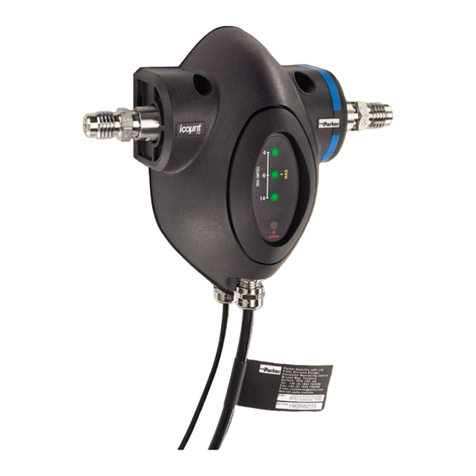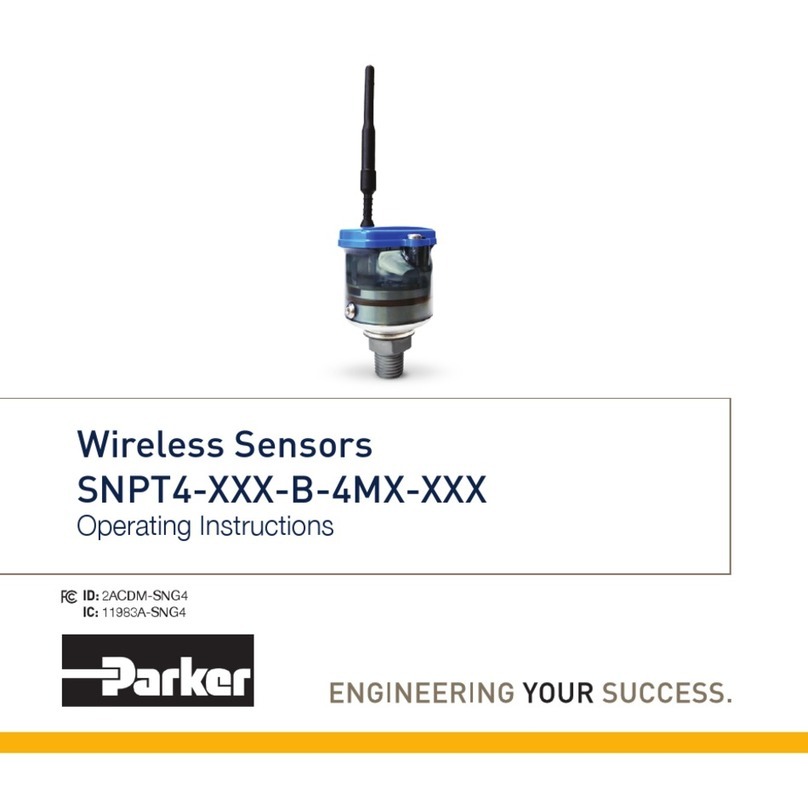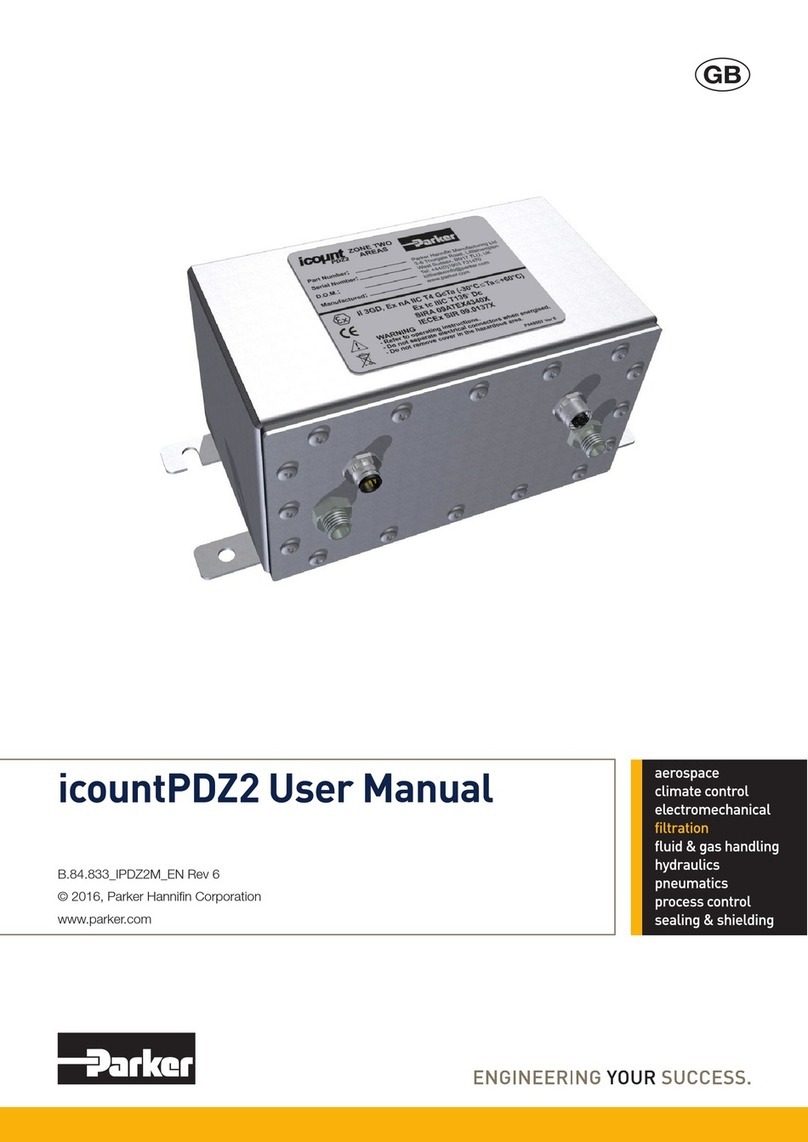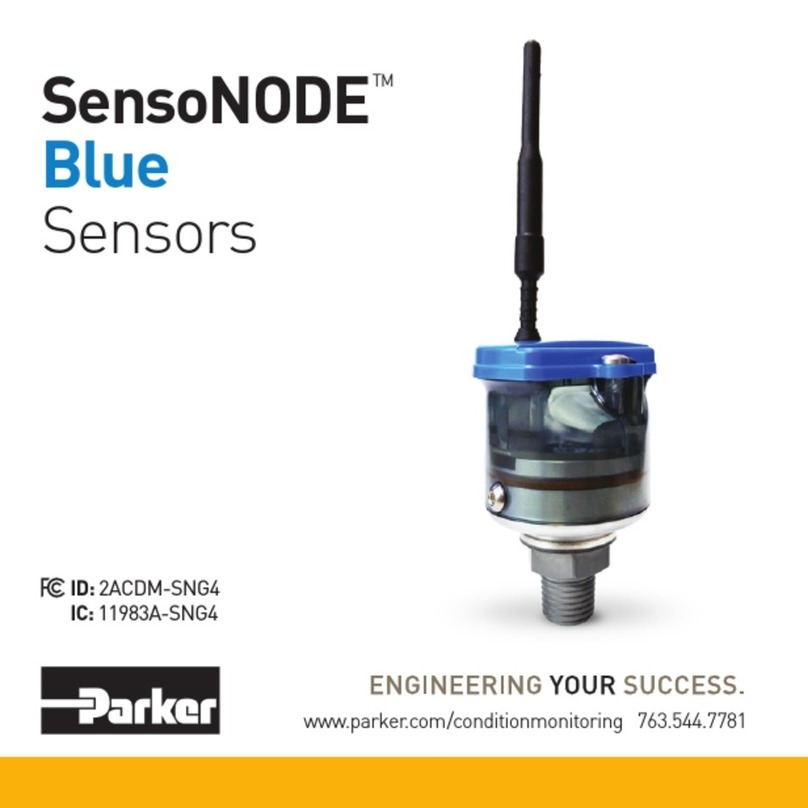
70-PHW-1025 R0.6 023-037X MT-IR Refrigerant Leak Detector spec & Install.doc 4
Sensor Placement.
The MT-IR Refrigerant Gas Sensor must be placed in locations that a refrigerant gas leak is likely to
occur and where leaked refrigerant gas is likely to concentrate so as to provide warning of a
potentially hazardous condition. Mounting locations are dependent upon the application and the
refrigerant gas to be monitored. The housing has a 3/4” conduit knockout hole in the bottom so the
sensor must be mounted vertically.
All mounting locations must be a fixed, well supported wall, pole or frame with little or no vibration.
Sensors must be placed in locations that will prevent damage from fork trucks, carts, and other
moveable devices.
For Halocarbon refrigerants, place the sensor 18 to 24 inches off the floor. For Ammonia (R717),
place the sensor 18 to 24 inches from the ceiling.
Use only watertight fittings, either conduit fittings or cable retention fittings. Mount conduit on the
bottom side of the housing to prevent moisture from dripping on the control board.
HVAC/Refrigeration Machinery Room
Prior to placement of the MT-IR Gas Sensors, the room air currents need to be determined. Air
currents can be determined through the use of smoke candles or any other accepted field-expedient
method. The air currents of every potential condition should be analyzed. The maximum air flow
rate past the sensor should not exceed 3 feet per second. Air velocity past the sensor can be
determined by lighting a match close to the sensor. If the match is blown out by the air current,
mounting the sensor inside a pull box with the knockouts opened slightly or some other method of
damping the air must be used.
Exhaust Fan On -- The air currents within the machinery room exhaust fan must be determined.
Identify locations that are "downwind" of the potential leak source. Locate one sensor near the air
intake duct of the exhaust fan, but not directly in the duct so the sensor is not subject to the full
force of the duct air.
Exhaust Fan Off -- In applications where the machinery room exhaust fan can be shut off, identify
air currents of the machine room with the fan off. Locate a position "downwind" of the potential
leak source with the fan off. This location may be omitted if the exhaust fan is to be operated
continuously.
Refrigerated Room
Determine the direction of the discharge air from the evaporator coil.
Halocarbon Refrigeration Systems -- Mount the sensor on a wall near the return air vents of the
evaporator coil or within between ten to twenty feet of a doorway exiting the room to a space. Also
18 to 24 inches above the finished floor. Use of a "J" box or some other form of protection for the
sensor may be necessary.
Ammonia Refrigeration Systems -- Mount the sensor on a wall in the downwind air path of the
discharge air, at least 20 feet or more from the coil or on the wall on the opposite side of the room.
18 to 24 inches from the ceiling. Do not place the sensor closer than 10 feet from the coil or directly
in the discharge air path to avoid temperature fluctuations due to defrost and violent air circulation.

































